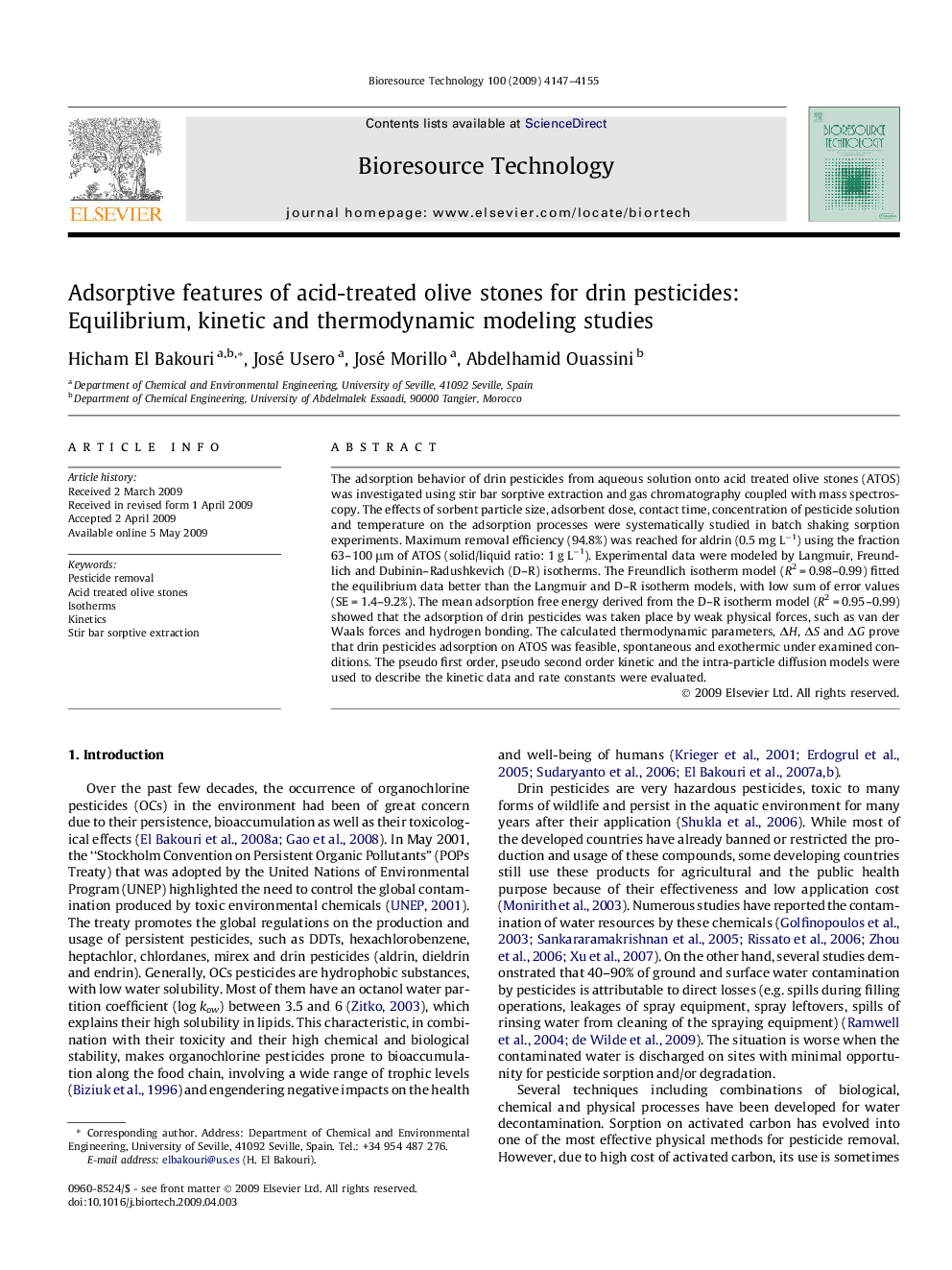| Article ID | Journal | Published Year | Pages | File Type |
|---|---|---|---|---|
| 684622 | Bioresource Technology | 2009 | 9 Pages |
Abstract
The adsorption behavior of drin pesticides from aqueous solution onto acid treated olive stones (ATOS) was investigated using stir bar sorptive extraction and gas chromatography coupled with mass spectroscopy. The effects of sorbent particle size, adsorbent dose, contact time, concentration of pesticide solution and temperature on the adsorption processes were systematically studied in batch shaking sorption experiments. Maximum removal efficiency (94.8%) was reached for aldrin (0.5 mg Lâ1) using the fraction 63-100 μm of ATOS (solid/liquid ratio: 1 g Lâ1). Experimental data were modeled by Langmuir, Freundlich and Dubinin-Radushkevich (D-R) isotherms. The Freundlich isotherm model (R2 = 0.98-0.99) fitted the equilibrium data better than the Langmuir and D-R isotherm models, with low sum of error values (SE = 1.4-9.2%). The mean adsorption free energy derived from the D-R isotherm model (R2 = 0.95-0.99) showed that the adsorption of drin pesticides was taken place by weak physical forces, such as van der Waals forces and hydrogen bonding. The calculated thermodynamic parameters, ÎH, ÎS and ÎG prove that drin pesticides adsorption on ATOS was feasible, spontaneous and exothermic under examined conditions. The pseudo first order, pseudo second order kinetic and the intra-particle diffusion models were used to describe the kinetic data and rate constants were evaluated.
Related Topics
Physical Sciences and Engineering
Chemical Engineering
Process Chemistry and Technology
Authors
Hicham El Bakouri, José Usero, José Morillo, Abdelhamid Ouassini,
